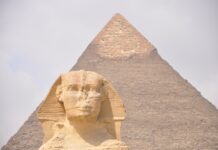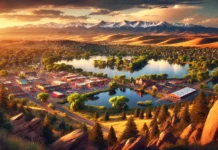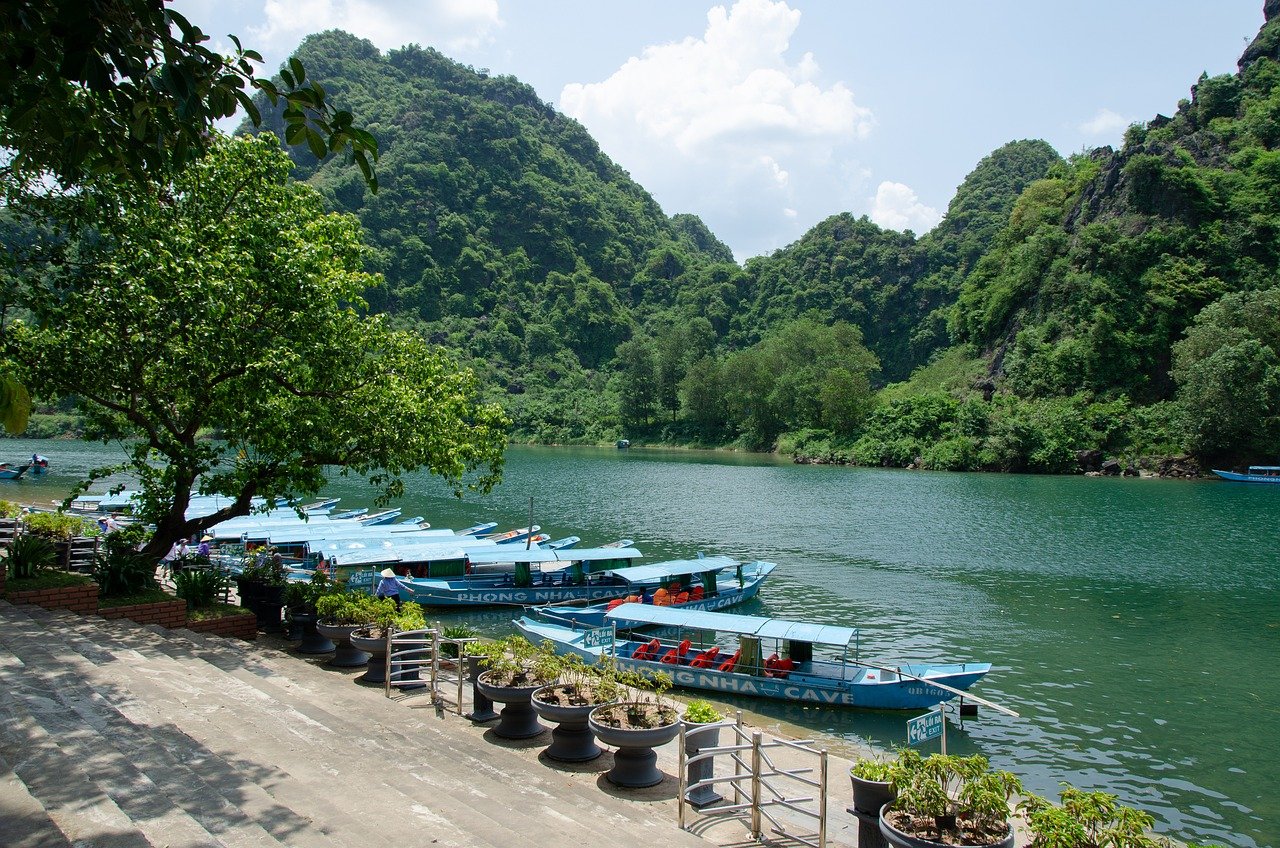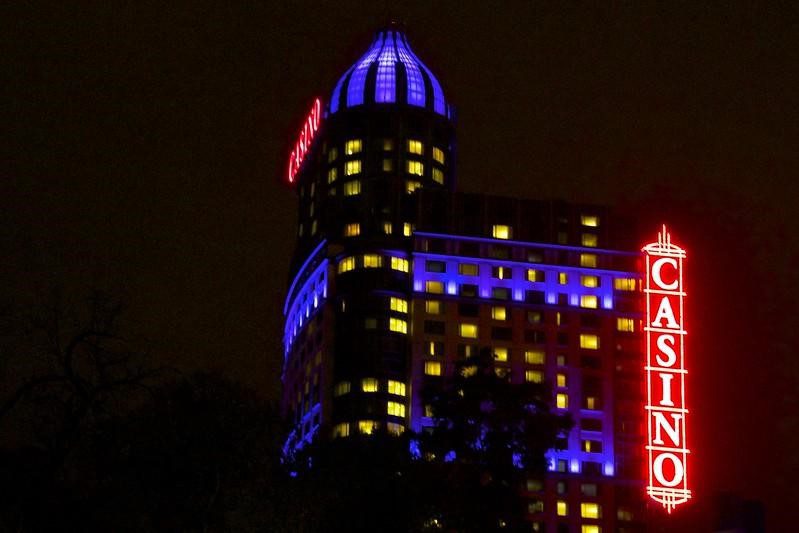Nepal Tour in 12 Days with Booking Details
We’ll experience a breathtaking sunrise from Sarangkot, view the majestic Annapurna mountain range, including Fish Tail, from Pokhara, and enjoy a serene boat ride on Phewa Lake. We’ll visit Lumbini, the sacred birthplace of Lord Buddha, go on a thrilling safari in Chitwan National Park, and explore the ancient temples and stupas of the Kathmandu Valley. We’ll also have the opportunity to meet the living goddess, Kumari, at Kathmandu Durbar Square.
The best times to visit Nepal are during the spring months of March, April, and May, and the autumn months of September, October, and November. During these periods, the weather is pleasant, allowing you to fully enjoy outdoor activities.
For detailed budget information and booking links, please check the description box below.
Tour Plan:
Day 1:
Arrive in Kathmandu, the capital of Nepal, located in the heart of the country. Rich in history and cultural heritage, Kathmandu is surrounded by majestic mountains, including the Himalayas. The city is known for its ancient temples, vibrant markets, and diverse population, which blend traditional architecture with modern influences, making it a fascinating destination in South Asia. Spend the night in Kathmandu.
Day 2:
On the second day of your Nepal tour, start the morning with a visit to Swayambhunath Stupa, also known as the Monkey Temple. Located about 20 to 30 minutes away from Kathmandu city center, this sacred Buddhist site is perched on a hilltop and offers a stunning panoramic view of the Kathmandu Valley. Built-in the 5th century, Swayambhunath is a UNESCO World Heritage Site famous for the monkeys in the area.
After visiting Swayambhunath, visit Kathmandu Durbar Square, the historical and cultural center of Kathmandu. This UNESCO World Heritage Site features remarkable architecture, ancient temples, palaces, and vibrant street life. Explore the Hanuman Dhoka Palace, which was once the royal residence of the kings of Nepal, and admire its exquisite wood carvings. Don’t miss the Talu Bani Temple, an important landmark here.
Next, visit the Kalabai Temple, dedicated to a form of Lord Shiva. Head to Kumari Ghar (Kumari’s Abode), where you’ll see the living goddess Kumari, a little girl believed to be the incarnation of the goddess. Finally, check out Kasam Manda, a temple believed to be made from the wood of a single tree, which is linked to the origin of Kathmandu’s name.
From Kathmandu Durbar Square, visit Pashupatinath Temple, located on the banks of the Bagmati River. This UNESCO World Heritage Site, dedicated to Lord Shiva, features a huge temple complex with intricate pagoda-style architecture, golden spires, and numerous smaller shrines. Complete your tour with a visit to Boudhanath Stupa, Nepal’s largest stupa and a sacred site for Buddhists. Spend the night in Kathmandu.
Day 3:
On the third day, travel by car from Kathmandu to Bandipur, which takes approximately 5 hours. Upon arrival in Bandipur, start your sightseeing with a visit to Siddha Cave, one of Nepal’s largest natural caves, known for its impressive stalactites and stalagmites.
`Stroll through Bandipur’s charming bazaar, lined with beautifully preserved Newari houses and cobblestone streets. Enjoy local cuisine at a restaurant offering authentic Nepali dishes, and spend the night in Bandipur.
Day 4:
On the fourth day, drive from Bandipur to Pokhara, a journey of around 2 to 3 hours. Pokhara, nestled at the base of the Annapurna range, is renowned for its stunning natural beauty and tranquil ambiance. Upon arrival, head to Phewa Lake, the city’s main attraction. This serene freshwater lake offers breathtaking views of the surrounding mountains, including the iconic Machapuchare Peak. Enjoy a relaxing boat ride on the lake. Pokhara, often referred to as the gateway to the Annapurna region, is a popular destination for adventure enthusiasts and nature lovers alike. Spend the night in Pokhara.
Day 5:
On the fifth morning, head to Sarangkot Hill Station near Pokhara to enjoy a stunning sunrise over the Himalayas. Afterward, visit Bindabasini Temple, a revered Hindu shrine dedicated to Goddess Bindabasini, an incarnation of Goddess Durga. The temple offers panoramic views of the surrounding mountains and valleys.
Following breakfast, visit the World Peace Pagoda, a Buddhist stupa perched on a hilltop overlooking Pokhara. It provides panoramic views of the city and Phewa Lake. Next, see the mesmerizing Devi’s Fall, where the Pardi River mysteriously vanishes underground. Spend the night in Pokhara.
Day 6:
On the sixth day, travel by road from Pokhara to Lumbini. Located in southern Nepal, Lumbini is a significant pilgrimage site, famous as the birthplace of Siddhartha Gautama, who later became Lord Buddha. This UNESCO World Heritage Site holds immense cultural and spiritual importance for Buddhists worldwide.
The journey from Pokhara to Lumbini allows travelers to explore Buddhist heritage and witness the serene ambiance of this sacred site. It is a place for pilgrimage and reflection, inviting visitors to connect with the teachings of compassion and enlightenment spread by Lord Buddha. Spend the night in Lumbini.
Day 7:
On the seventh day, enjoy a sightseeing tour of Lumbini. The main attraction is the Sacred Maya Devi Temple, marking the exact spot where Queen Maya Devi gave birth to Prince Siddhartha under a Sal tree. The temple complex includes ancient ruins, monasteries, and meditation centers.
Another prominent landmark is the Ashoka Pillar, erected by Emperor Ashoka in the 3rd century BC, symbolizing Lumbini’s historical significance. Visitors can explore the peaceful Lumbini Garden, adorned with numerous shrines and Bodhi trees, offering a serene setting for contemplation and meditation. Spend the night in Lumbini.
Day 8:
On the eighth day, travel to Chitwan. The journey offers breathtaking views of Nepal’s countryside. Upon arrival, visit the enchanting Tharu Village to observe the traditional lifestyle of the Tharu community.
Next, explore the Elephant Breeding Center, where majestic elephants reside. As the day draws to a close, head to the sunset viewpoint to witness a magnificent sunset. Spend the night in Chitwan.
Day 9:
On the ninth day, embark on a Jeep Safari inside Chitwan National Park. This thrilling safari will take you through the park’s dense forests and grasslands, where you may encounter rhinos, deer, and other animals.
After the safari, enjoy a tranquil canoe ride along the Rapti River, where you can see various bird species and aquatic animals. Spend the night in Chitwan.
Day 10:
On the tenth day, travel from Chitwan to Nagarkot via Kathmandu. This remarkable journey first takes you through the lush Terai plains of Chitwan, then through the bustling capital city of Kathmandu, and finally to the serene hills of Nagarkot. Located about 32 kilometers east of Kathmandu, Nagarkot is a popular hill station renowned for its panoramic views of the Himalayas, including Mount Everest on clear days.
Nagarkot is a favorite spot for watching the sunrise and sunset over the snow-capped peaks of the Himalayas. Visitors can enjoy scenic walks through pine forests and picturesque villages along the way. The tranquility of the place makes it an ideal destination for nature lovers. Spend the night in Nagarkot.
Day 11:
On the 11th day, start the morning with a spectacular sunrise view from Nagarkot. Afterward, explore Bhaktapur Durbar Square and Patan Durbar Square before heading back to Kathmandu. Begin your visit at Bhaktapur Durbar Square, a UNESCO World Heritage Site renowned for its architectural marvels. Here, you can see:
- The Golden Gate: A masterpiece of Newari craftsmanship, this intricately carved gate is a highlight of Bhaktapur.
- 55-Window Palace: This historic palace features 55 beautifully carved windows.
- Siddhi Lakshmi Temple: A beautiful Hindu temple dedicated to Goddess Siddhi Lakshmi.
- Vatsala Temple: Notable for its unique pagoda-style architecture and intricate design.
Next, head to Patan Durbar Square, where you’ll visit:
- Krishna Mandir: A stunning example of stone architecture dedicated to Lord Krishna.
- Hiranya Varna Mahavihar: A beautiful Buddhist monastery with rich cultural significance.
- Vishwanath Temple: Dedicated to Lord Vishwanath, this temple is known for its architectural beauty.
- Patan Museum: This museum showcases a rich collection of art and artifacts.
After exploring these heritage sites, proceed to Kathmandu.
Day 12:
On the 12th day, head back to the airport for your departure. If you enjoyed this travel guide, please like and share the article. We would also love to hear your thoughts, so feel free to leave a comment below.
Book the Complete Tour Package:
To book your tour or for more information, please connect with:
- Volant Holidays & Hotels
Website: volantholidays.com
Contact Numbers: +91-7439924761 | +91-7596824761 | +91-8777622291
WhatsApp: +91-7439924761 | +91-7596824761 | +91-8777622291
Email: crs@volantholidays.com | volantholidays@gmail.com - Delhi Office: 9th Floor, Westend Mall, Janakpuri District Center, New Delhi, Delhi 110058
- Kolkata Office: 245, 4th Floor, Above Senco Gold Shop, East Bijoy Nagar 2, Madhyamgram, Kolkata 700129
Estimated Budget Breakdown:
Accommodation
- Budget: $10 – $30 per night ($120 – $360 for 12 nights)
- Mid-Range: $30 – $100 per night ($360 – $1,200 for 12 nights)
- Luxury: $100 – $300+ per night ($1,200 – $3,600+ for 12 nights)
Food and Drink
- Budget: $5 – $10 per day ($60 – $120 for 12 days)
- Mid-Range: $10 – $30 per day ($120 – $360 for 12 days)
- Luxury: $30 – $60+ per day ($360 – $720+ for 12 days)
Transportation
- Local Buses and Taxis: $5 – $15 per day ($60 – $180 for 12 days)
- Private Car Hire: $30 – $60 per day ($360 – $720 for 12 days)
Activities and Entrance Fees
- Trekking (guided, with permits): $50 – $150 per day ($600 – $1,800 for 12 days)
- Sightseeing and Entrance Fees: $5 – $20 per day ($60 – $240 for 12 days)
- Adventure Activities (e.g., paragliding, rafting): $50 – $200 per activity
Miscellaneous
- Souvenirs, Tips, Misc. Expenses: $50 – $150
Total Estimated Budget:
- Budget Traveler
- Accommodation: $240
- Food and Drink: $90
- Transportation: $100
- Activities and Entrance Fees: $150
- Miscellaneous: $50
- Total: $1,230
- Mid-Range Traveler
- Flights: $800 (average)
- Accommodation: $600
- Food and Drink: $240
- Transportation: $300
- Activities and Entrance Fees: $500
- Miscellaneous: $100
- Total: $2,540
- Luxury Traveler
- Flights: $1,000 (average)
- Accommodation: $1,800
- Food and Drink: $600
- Transportation: $600
- Activities and Entrance Fees: $1,000
- Miscellaneous: $150
- Total: $5,150
Notes:
- Seasonal Variations: Costs may be higher during peak tourist seasons (spring and autumn).
- Trekking Considerations: For major treks like Everest Base Camp or Annapurna Circuit, additional costs for guides, porters, and equipment rental may apply.
- Health and Safety: Ensure you have travel insurance that covers adventure activities and medical emergencies.
These estimates provide a starting point for budgeting your 12-day trip to Nepal. Adjustments can be made based on your personal preferences and specific itinerary.
Related Article: 10 Days Vietnam Tour Plan










